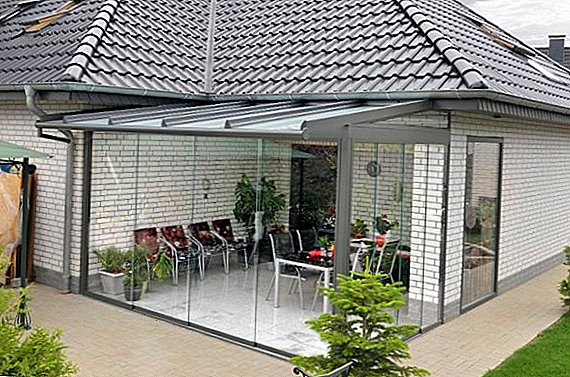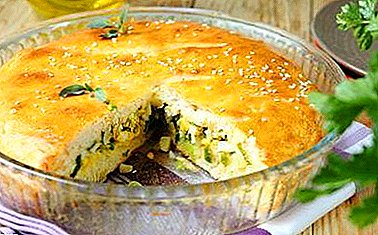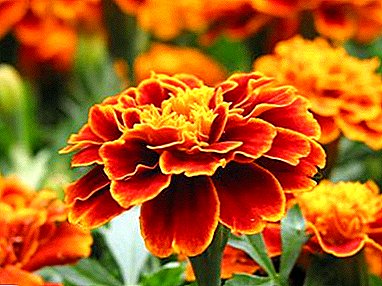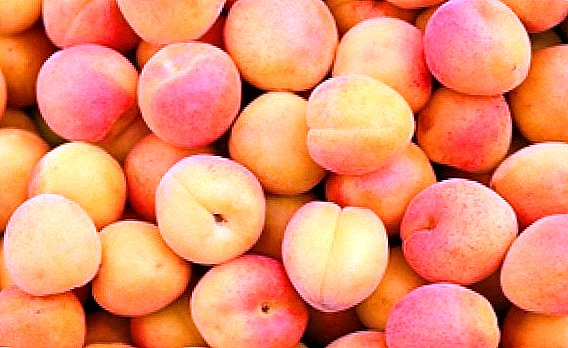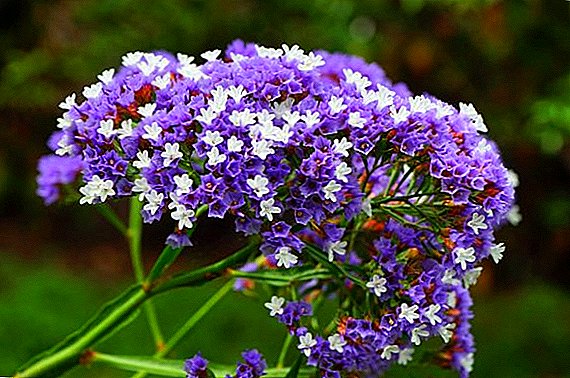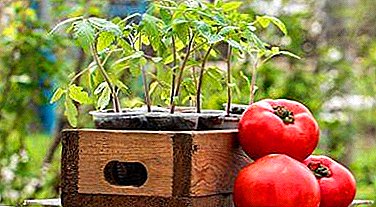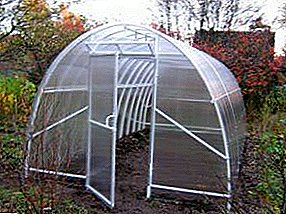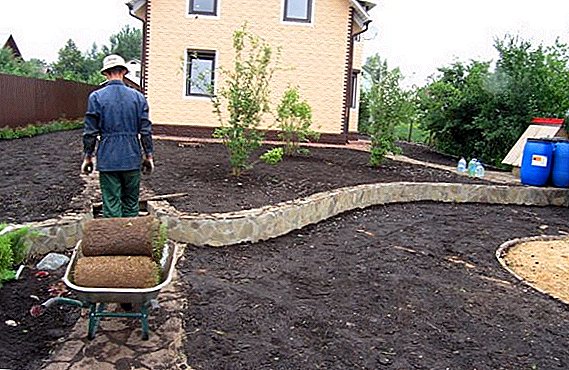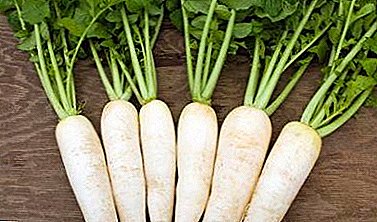
Daikon, a close relative of radish and radish, has specific important economic and biological characteristics that affect the holding of agrotechnical measures for cultivation.
What are the varieties and hybrids and how to plant a root crop with seeds, we will tell later in the article. We will also tell you about the nuances that gardeners face in growing and caring for this vegetable.
Features of growing
The best daikon harvests are formed on light fertile soils with deep groundwater. A good harvest requires deep autumn and spring tillage. On heavy loamy soils, you can get high-quality root crops, if you plant varieties with poorly submerged roots on the ridges - no more than half the length.
During the growing season they spend 5-6 waterings.. The irrigation rate per 10 m² is 350 liters of water. Before planting, seeds are soaked in a solution of potassium permanganate - 0.2 g per 1 liter of water. When air humidity is less than 60%, the development of root crops is delayed - the formation of wood elements and the accumulation of bitterness is enhanced.
Compatibility with other cultures
Daikon can be cultivated after any culture, except for representatives of the Cabbage family, with whom he has common diseases and pests. The best predecessors:
- potatoes;
- tomato;
- cucumber;
- celery;
- salad;
- pumpkin.
 Daikon can be combined with other cultures. and grow it in compacted plantings. The negative effect of daikon on the yield of other crops was not observed. On the slopes of high ridges (35-40 cm) sow:
Daikon can be combined with other cultures. and grow it in compacted plantings. The negative effect of daikon on the yield of other crops was not observed. On the slopes of high ridges (35-40 cm) sow:
- dill;
- parsley;
- turnips.
In re-culture, daikon is cultivated after harvesting:
- cereals;
- early vegetables;
- potato
Planting dates
Daikon planted in open ground in the 2nd decade of May, the 2nd decade of June, the 2nd and 3rd decade of July. Indoor soil is sown in the 3rd decade of February.
Varieties and hybrids
In the process of breeding, more than 700 varieties and hybrids have been created, differing in precocity, shape and size of the fruit, immersion in the soil. For central Russia, varieties for greenhouses are recommended — Sasha, for open ground:
- Dubinushka;
- The Dragon;
- Caesar;
- Favorite;
- Minovasi;
- Moscow hero.
Table. Characteristics of varieties and hybrids of daikon
| Sort | Fruit weight (kg) | The form |
| Early ripening - vegetation period of 30-60 days | ||
| Sasha | 0,1-0,4 | Rounded, rounded oval |
| Rhinoceros | 0,3-0,4 | Conic |
| Vakula | 0,4-0,8 | Cylindrical |
| Barchonok | 0,4 | Rounded |
| Pink Misato Shine | 0,5-0,9 | Round or flat rounded |
| Sredneranny with the vegetative period from 60 to 70 days: | ||
| Mino Same Cross F₁ | 0,4-0,5 | Conic |
| Caesar | 0,6-1,0 | Cylindrical |
| Autumn handsome | 0,3-0,42 | Elongated eliptic |
| Diamond | 0,23 | Rounded |
| Dubinushka | 0,6-2,0 | Cylindrical |
| Favorite | 0,5-0,6 | Conic |
| Mid-season - 70-85 days | ||
| Emperor F₁ | 0,5-0,6 | Icicle |
| Elephant Fang | 0,3-0,6 | Elongated cylindrical |
| The Dragon | 0,9-1 | Cylindrical |
| Moscow hero | 1,0-1,5 | Cylindrical |
| Average late 86-90 | ||
| Minovas PC | 1,0-1,5 | Cylindrical |
Early ripening varieties, such as Sasha, Barchonok, Rhinoceros, are sown in two terms - in April in the greenhouse, in open ground in the 2nd decade of July. Most resistant to tsvetushnosti Minovashi and Sasha.
Daikon seeds can be purchased in specialized stores or order in online stores. The cost of 1 g of seeds in Moscow and St. Petersburg - depending on the variety and quantity - from 16 rubles per 1 g. 1 g of seeds contains from 90 to 140 pieces.
How to plant a root seed?
 In Europe, Japanese radish is mainly grown in open ground. To speed up ripening, you can use a film or a closed ground.
In Europe, Japanese radish is mainly grown in open ground. To speed up ripening, you can use a film or a closed ground.
Step by step instructions on how to plant seeds in open ground:
- Choose a place protected from the winds and well illuminated by the sun.
- After plowing and harrowing, they carry out provocative irrigations - they cut irrigation furrows and let water flow through them. Shoots of weeds, which appeared after irrigation, destroy shallow plowing without turning the reservoir.
- Per 1 m², 500 g of superphosphate and 250 g of potassium salt are applied for autumn digging, 300 g of ammonium nitrate before sowing and as dressings. Organic fertilizer applied under the previous culture.
- In the open ground, the seeds are buried in depth: 1-2 cm on mineral soils, 2-3 cm on peat bogs. In the second half of July, seeds are sown to produce an autumn harvest.
- To prevent the plants from shading each other, a 30 × 20 cm sowing scheme is used. Four rows of daikon are placed on a 1.8 cm wide ridge with a standing density of 10-11 plants per 1 m². On a ridge 1.2 m wide, they are planted in 2 rows, separated by 60-70 cm from each other. Distances between plants are 20-25 cm.
- Seeds are sown in breeding method - 2-3 per well.
- After sowing, the soil is compacted and mulched with peat or sawdust with a layer of up to 1.5 cm. Shoots appear for 4-7 days.
- In phase 1-2 of these leaves the strongest plant is left, the rest are removed or transplanted to the place of the dead. At the same time, make the first feeding, the second after 2 weeks.
- During the summer, weed and loosen the soil 2-3 times between the rows: first to a depth of 14 cm, then, in order not to damage the fruit, to a smaller depth.
- Starting from the moment of thinning, they are fed with organic or mineral supplements. The first top dressing after thinning is a mullein infusion, diluted 1:10, with the addition of 15 g of urea per 10 l of solution. The second feeding at the beginning of the formation of the fetus - chicken manure 1:15 with an extract of superphosphate (15 g per 10 l of solution). Top-dressings with complex mineral fertilizers are effective.
Features of landing in a protected ground:
- Sowing time in closed ground:
- 1st term - 2nd and 3rd decade of January;
- 2nd term - the 3rd decade of February;
- 3rd term - 2nd and 3rd decade of March.
The most favorable - the third term of sowing.
- Sowing seeds is carried out manually by 2-3 pieces in each well. Sowing scheme - 45 × 25 cm.
- Shoots weed, at the same time thinning the plants, leaving the most developed.
- Regulate temperature: the period of germination - 12-15 ºC, the formation of the fetus - 15-18 ºC. The relative humidity of the air in the greenhouse is 60-65%.
- During the formation of root crops, it is regularly watered with warm water t 20-25 ºC.
- When reaching 85% of the technical ripening plants, diseased and damaged fruits are removed.
Features of growing at home:
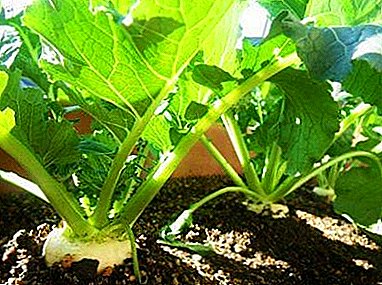 In the autumn, deep soil digging is carried out - at least 30 cm. Before the onset of winter, the soil is deeply loosened. Processing is carried out manually or use the moto cultivator "Mole", which treats the soil to a depth of 35 cm.
In the autumn, deep soil digging is carried out - at least 30 cm. Before the onset of winter, the soil is deeply loosened. Processing is carried out manually or use the moto cultivator "Mole", which treats the soil to a depth of 35 cm.- Since autumn, the soil is filled with organic fertilizers - 5-10 kg per 1 m². Before planting, make a nitrophore of 1 m² 50 g or a glass of wood ash.
- Under the conditions of the Black Earth, beds are made 35-40 cm high.
- On large areas, seeds are covered with soil using a flat cutter, slightly tamped and watered.
- Despite the fact that the tops can withstand a temperature drop of up to 4 ºC, planting in anticipation of frost should be covered with a non-woven material or film.
- Root vegetables cleaned with a pitchfork or pulled out with their hands.
Important: Varieties Sasha, Dubinushka, Minovashi, Pink Shine Misato give good yields in the greenhouse.
In addition to direct sowing of seeds, the seedling method is used: in the first half of March, seeds of varieties with round or cylindrical root crops are planted in containers not less than 10 cm deep. Upon reaching the phase of 3-4 true leaves, seedlings are rolled over with a clod of earth to a permanent place.
The nuances of vegetable care
- To protect crops from a cruciferous flea, seedlings are pollinated 3-4 times with ashes or tobacco dust with an interval of 4-5 days or covered with non-woven materials.
- The soil for daikon must be deeply processed - otherwise, any obstacle to the growth of the root becomes the cause of the curvature of the fruit.
- Organic fertilizers applied immediately before sowing reduce the presentation of goods - curved fruits are formed.
- When the longitude of the day more than 15 hours in the daikon delayed the formation of the root.
- With early sowing, when a long day is combined with low daily average air temperatures, tsvetushnosti less than when sown in June.
- Daikon can be sown not earlier than in 4-5 years.
Fragile and delicate daikon root require careful handling. If the soil is thoroughly and deeply treated, a spade or undermining tools will not be required for cleaning. At the end of July, when the site is freed from garden crops, you can plant daikon seeds in the empty beds and get a rich harvest in September.


 In the autumn, deep soil digging is carried out - at least 30 cm. Before the onset of winter, the soil is deeply loosened. Processing is carried out manually or use the moto cultivator "Mole", which treats the soil to a depth of 35 cm.
In the autumn, deep soil digging is carried out - at least 30 cm. Before the onset of winter, the soil is deeply loosened. Processing is carried out manually or use the moto cultivator "Mole", which treats the soil to a depth of 35 cm.